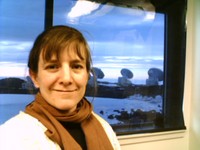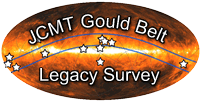|
Jennifer Hatchell
>Home
Teaching
|
|

Jennifer HatchellI am an STFC Advanced Research Fellow and star formation observer in the Astrophysics Group of the School of Physics and I am active in several surveys of nearby star-forming regions. My particular research interest is in using far-infrared and millimetre wavelengths to study clouds of gas and dust as they collapse under gravity to form stars.
JCMT Gould Belt survey
We plan to use the new submillimeter bolometer camera SCUBA-2, which has a mapping speed up to 1000 times that of its predecessor SCUBA, to image the dust emission from all the nearby star forming molecular clouds. This will increase the number of known protostars from tens to thousands, and increase our coverage of star forming clouds from a few square degrees to hundreds. With supporting velocity information from the molecular line array receiver HARP-B and magnetic field configurations from POL2, this survey will address some of the fundamental questions about star formation: how long does it take stars form, how are their masses determined, and what is the role of magnetic fields in the star formation process? The molecular line component of the survey with HARP-B is now underway, producing maps of carbon monoxide clouds in the Orion, Serpens, Perseus and Ophiuchus star-forming complexes. A sister survey using LABOCA on APEX targets the southern clouds in Lupus and Chamaeleon.
Spitzer Gould's Belt survey The
Spitzer Gould's Belt survey images the same nearby star-forming regions but at a different wavelengths. This completes the mid-IR survey begun by the Spitzer Cores to Disks and
Guaranteed Time programmes. With both mid-IR and submm data, one can
separate protostars at different evolutionary stages and estimate the
masses of their envelopes and disks.
The
Spitzer Gould's Belt survey images the same nearby star-forming regions but at a different wavelengths. This completes the mid-IR survey begun by the Spitzer Cores to Disks and
Guaranteed Time programmes. With both mid-IR and submm data, one can
separate protostars at different evolutionary stages and estimate the
masses of their envelopes and disks.
|


